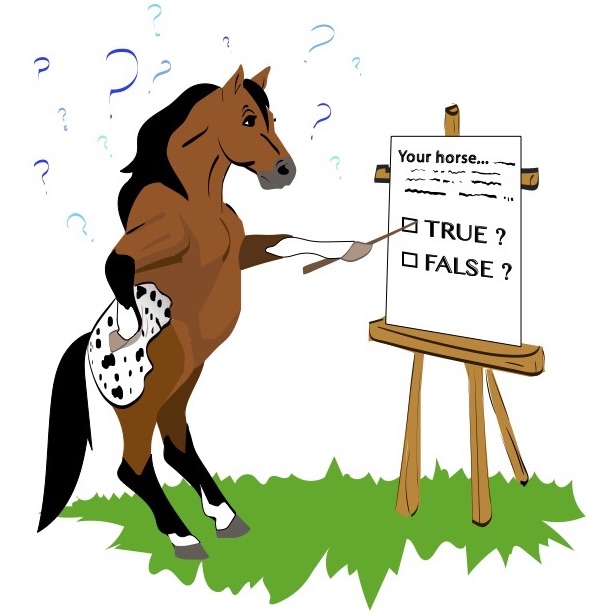
1. Which hair-swirl pattern is thought (by horsemen who believe in whorl analysis) most likely to indicate a calm, uncomplicated disposition?
A) A single swirl high up, near the forelock.
B) A single swirl centered on the forehead.
C) Two swirls anywhere side-by-side.
2. True or false: It’s a myth that you can tell much about a horse’s temperament by looking into his eyes.
T / F
3. True or false: If you’re considering a horse to buy and the seller won’t ride him for you at a lope, that’s a deal-breaker.
T / F
4. True or false. It’s a safe bet that a horse that seems calm and willing in his home arena will also be calm and willing out on the trail.
T / F
HOW’D YOU DO? (Answers below.)
1. B is correct. Horseman Doug Carpenter, whose reputation for picking future winners is well established in the performance horse world, says a single, centered whorl often correlates with a sensible, willing temperament. But, he cautions, “It’s like every other theory—not 100%.”
[LEARN MORE about whorls and horses’ temperaments.]
2. F is correct. Any experienced horseman will tell you that a horse’s eyes are a window to his soul. The proverbial large, soft, kind eye is generally associated with a trusting temperament and willing attitude. By contrast, the opposite—an eye that makes the horse seem nervous or suspicious of you for no reason—can be a warning sign. (If rough training in the horse’s past is the source of that suspicion, you may be able to train him away from it. Still, it’s not the ideal starting point for a relationship.)
[READ: Key tests to tell whether a horse has a willing disposition.]
3. T is correct. The lope is the most telling gait when you’re evaluating a horse’s disposition and level of training. As clinician Clinton Anderson points out, “Most horses feel some obligation to at least walk and trot, and will do so without much backtalk. It’s when you ask them to canter that chinks in their training—or any latent naughtiness—is likely to come out.” If the seller won’t ride the horse at a lope, it’s time to walk away.
[READ: Be sure to evaluate *this* before you buy a horse.]
4. F is correct. That is NOT a safe bet. You should always evaluate a horse’s disposition and attitude out on the trail to know for sure how he’ll behave there. Many horses act much differently away from home than they do in their familiar surroundings. If you’re considering buying a horse, ask the owner to round up another horse so the two of you can go on a little trail ride.
[RELATED: Choosing the right trail horse in 7 steps.]
Don’t miss out! If you’re not already receiving H&R’s fun and informative weekly newsletter, sign up now for The Ride. It’s *free*!
ALSO *FREE*: The terrific e-magazines Horse&Rider Monthly and Trail Rider Monthly. Sign up now!






